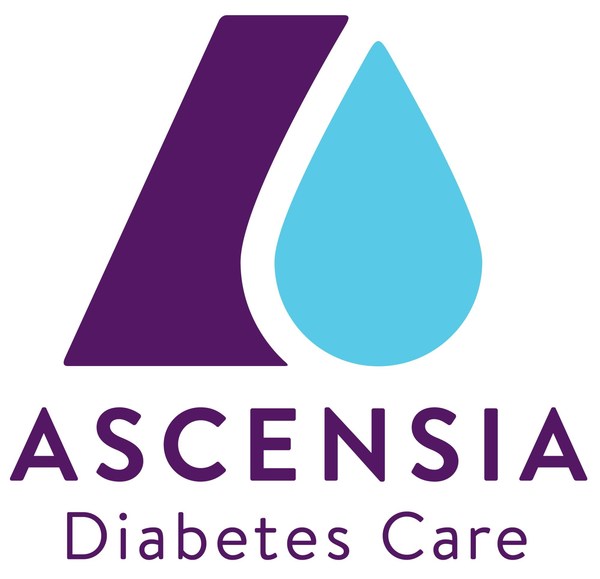ASCENSIA DIABETES CARE PRESENTS NEW RESEARCH SHOWING THAT PEOPLE USING THE CONTOUR® BLOOD GLUCOSE MONITORING SYSTEM AND APP EXPERIENCE FEWER OUT-OF-TARGET BLOOD GLUCOSE LEVELS

|
BASEL, Switzerland, May 2, 2022 /PRNewswire/ -- Ascensia Diabetes Care, a global diabetes care company, maker of CONTOUR® blood glucose monitoring (BGM) system portfolio and distributor of the Eversense® continuous glucose monitoring (CGM) system, announces a new study demonstrating that people who use the connected CONTOUR® BGM systems (BGMS) and CONTOUR®DIABETES App (CDA) for at least six months can see a reduced frequency of hypoglycaemic and hyperglycaemic blood glucose readings (BGRs). BGRs in these out-of-target ranges can lead to serious health complications, suggesting a key benefit of using Ascensia's connected CONTOUR® BGMS and CDA together (the CDA system). Real-world data from this study were presented at the International Conference on Advanced Technologies & Treatments for Diabetes (ATTD) 2022.
The study, which assessed data from 7,047 CDA system users in Australia, demonstrated a reduction in frequency of BGRs within both hypoglycaemic (low) and hyperglycaemic (high) ranges. After six months, the estimated frequency of BGRs in high and very high ranges in people using the CDA system fell by more than 6.5-times and 5.6-times, respectively, compared to baseline. This decrease was more prominent among users who reported the use of oral antidiabetic medications, at 7.37-times less than baseline. The decrease of BGRs in the low range was modest at 1.2-times in the entire assessed population, and at 1.38-times in CDA system users who were treated with insulin and are more prone to hypoglycaemic events. These data suggest improved glycaemic control when using the CDA system for at least six months and, more generally, a key benefit in using connected BGMS, including apps, to support the management of diabetes.
The majority of CDA system users in the assessed group were people with type 2 diabetes (66.9%), for whom improvement of glycaemic control is associated with the reduced progression of diabetes-related complications[1]. As diabetes apps continue to permeate clinical care, these findings offer the potential to explore how connected BGMS with visibility and accessibility of blood glucose readings can support self-management for people with type 1 and type 2 diabetes.
Frank Held, Head BGM Marketing and Strategy at Ascensia Diabetes Care, said: "We're pleased to see results from the study showcasing that our CDA system is helping people with diabetes to manage their condition. While many diabetes apps support people with diabetes in managing their condition, they don't all provide alerts or guidance for hypoglycaemic or hyperglycaemic events, like the CONTOUR®DIABETES App does. Failure to properly address these events can result in serious health complications, so it is crucial that monitoring systems and connected apps facilitate the detection of high and low blood glucose levels."
Before this study, there were limited data assessing the impact of diabetes apps in Australia, particularly in a 'real world' setting. In addition, while evidence suggests that there are hundreds of diabetes apps that support people with diabetes in managing their blood glucose, only a third of these apps have alerts or guidance for hypoglycaemic and or hyperglycaemic events[2]. If these events are not addressed, they can become severe and lead to serious complications[3], so it is of utmost importance that monitoring tools help people with diabetes to manage these events.
The poster featuring this research, titled 'Assessment of Blood Glucose Readings of People with Diabetes in Australia who were using the connected CONTOUR®BGMS and CONTOUR®DIABETES App,' was presented from a study led by Wendy Mak PhD, Scott Pardo PhD, PStat®, and Rimma Shaginian, MD, MPH. ATTD 2022 took place in Barcelona, Spain from April 27-30, 2022.
1. Stratton, IM, et al. Association of glycaemia with macrovascular and microvascular complications of type 2 diabetes (UKPD 35); prospective observational study. BMJ 2000; 321: 205-412.2. Lum E, Jimenez G, Huang Z et al (2019) Decision support and alerts of apps for self-management of blood glucose for type 2 diabetes. JAMA 321(15):1530 1530–1532. https://doi.org/10.1001/jama.2019.1644. 3. Mayo Clinic. 2022. Hyperglycemia in diabetes - Symptoms and causes. [online] Available at: https://www.mayoclinic.org/diseases-conditions/hyperglycemia/symptoms-causes/syc-20373631 [Accessed April 2022].
Authors: PR Newswire
Read more https://www.prnasia.com/story/archive/3741515_AE41515_0




